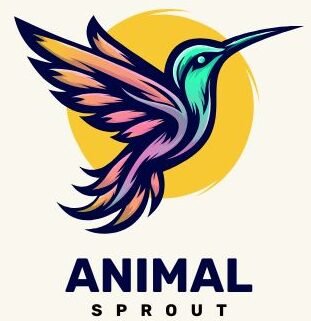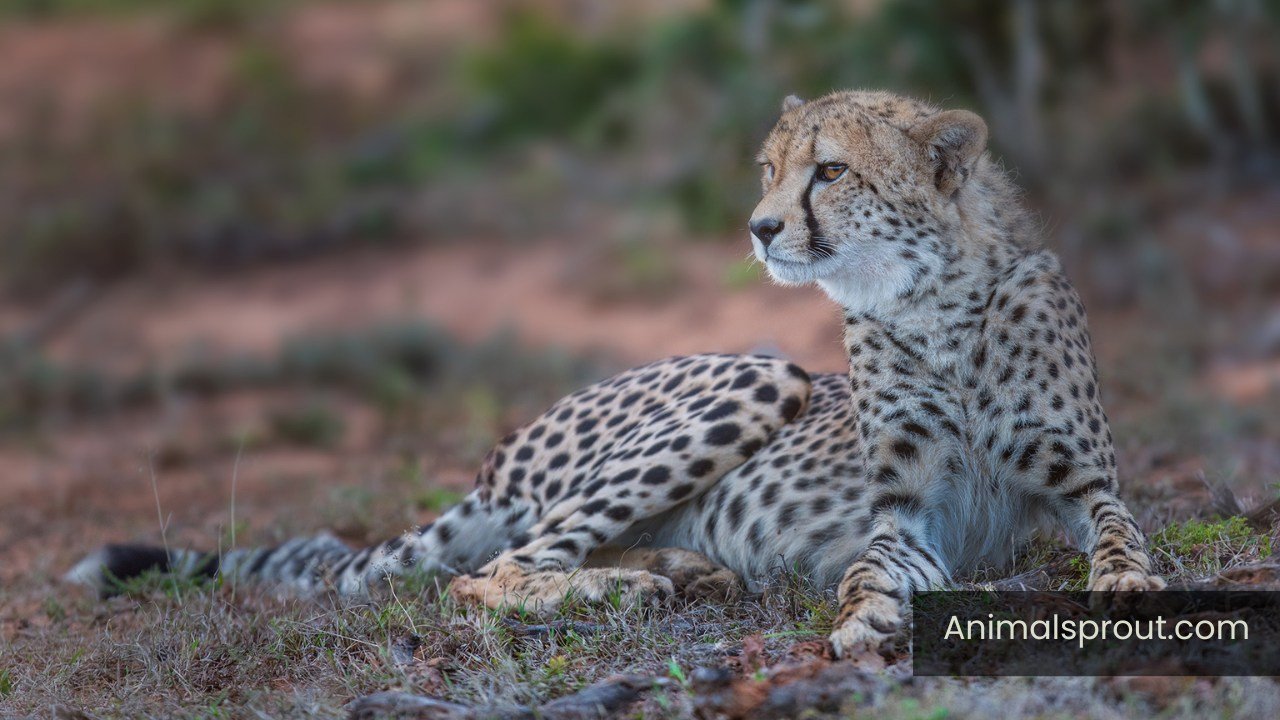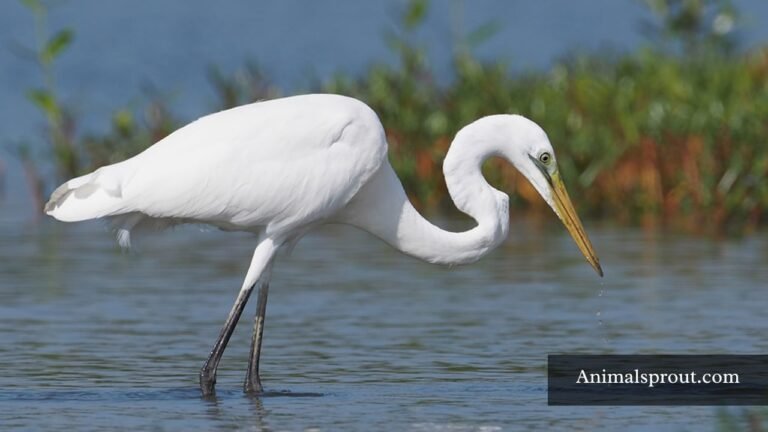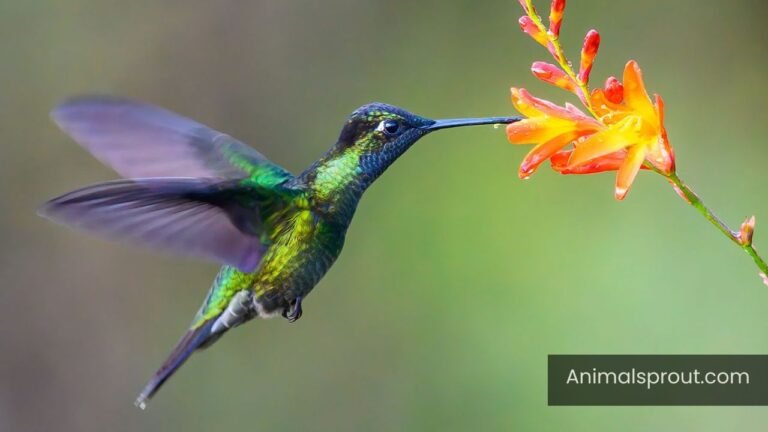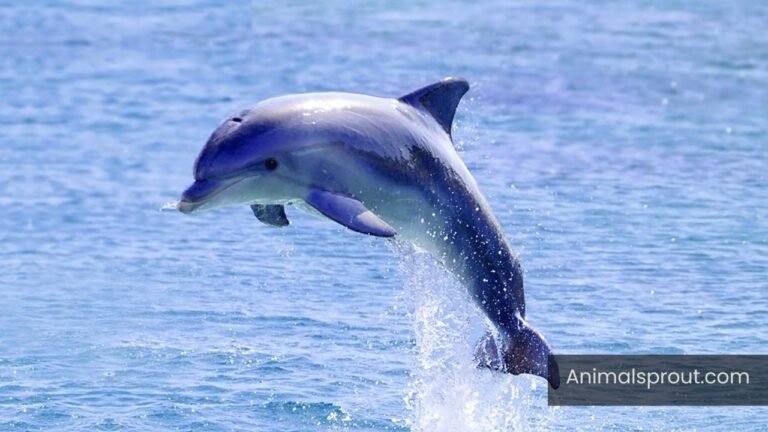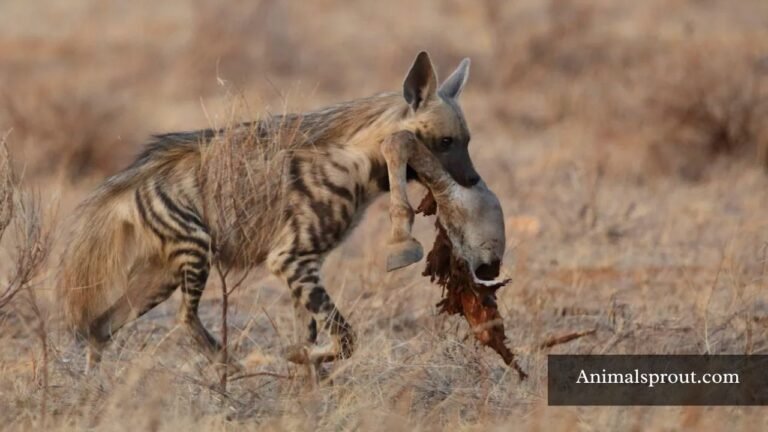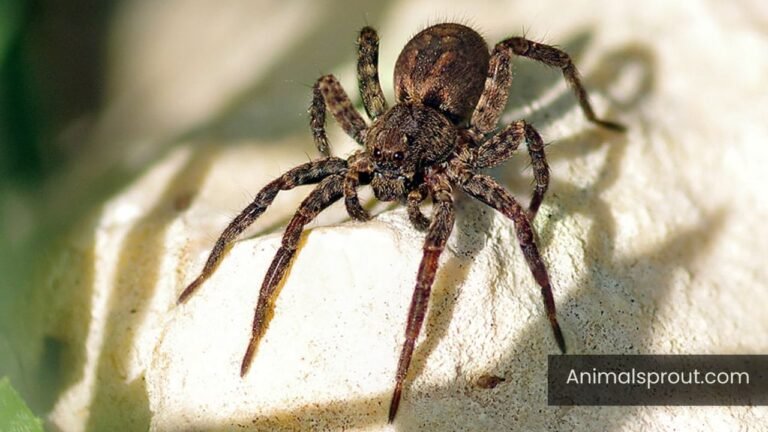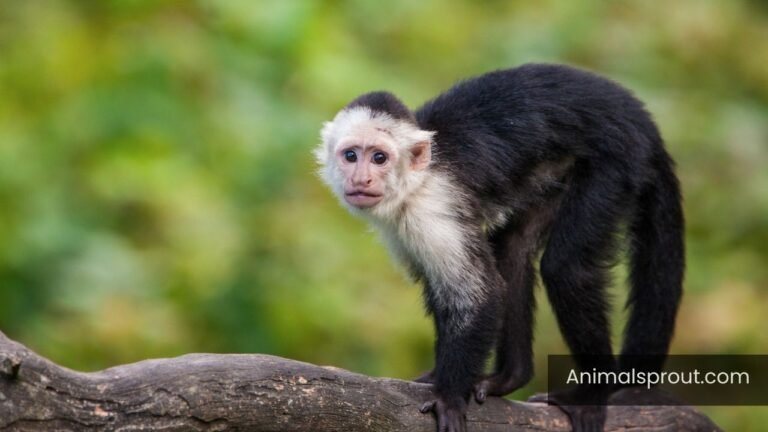Explore Top 18 Independent Animals In The World (With Pictures)
As we delve into the lives of independent animals in the world, we uncover stories of resilience and adaptability that challenge our perceptions of wildlife. This exploration is not just an academic exercise; it has real implications for conservation and understanding ecosystem dynamics. By reading this article, you’ll discover the unique traits and behaviors that enable these solitary beings to navigate their environments successfully.
List Of Most Independent Animals In The World
Here is the list of animals that are independent:
| Number Of Animals | Names Of Independent Animals |
| 1 | Snow Leopards |
| 2 | Tiger |
| 3 | Bears |
| 4 | Moles |
| 5 | Great White Sharks |
| 6 | Komodo Dragons |
| 7 | Hawaiian Monk Seals |
| 8 | Octopus |
| 9 | Honey Badgers |
| 10 | Cheetah |
| 11 | Raccoons |
| 12 | Sea Turtles |
| 13 | Sloths |
| 14 | Koala |
| 15 | Crocodiles |
| 16 | Orangutans |
| 17 | Platypus |
| 18 | Cats |
Snow Leopards
Scientific Name: Panthera uncia
Class: Mammalia
Diet: Carnivores
Snow leopards, often dubbed the ghosts of the mountains, are fascinating embodiments of independence and resilience. These elusive big cats navigate the harsh, rugged terrain of Central Asia with an elegance that belies their solitary nature. Unlike many of their feline relatives, snow leopards thrive in isolation, relying on their keen instincts and remarkable adaptability to survive in elevations that soar above 10,000 feet. Their thick fur and long tail not only provide insulation against frigid temperatures but also aid in maintaining balance while traversing rocky outcrops, making them masters of their mountainous domain.

One striking aspect of snow leopards is their unique hunting strategy, which underscores their independence. They prefer to stalk their prey—primarily mountain ungulates—using stealth rather than speed. This method reflects a deep understanding of their environment and the necessity of patience in a world where food can be scarce. With only about 4,000 individuals remaining in the wild, snow leopards symbolize the delicate balance of their ecosystems and the challenges faced by solitary hunters in an increasingly fragmented habitat. The conservation efforts surrounding these majestic creatures not only aim to protect them but also highlight the importance of preserving the intricate web of life that sustains them in their lofty habitats.
Tiger
Scientific Name: Panthera tigris
Class: Mammalia
Diet: Carnivores
Tigers are the epitome of independence in the animal kingdom, embodying a solitary lifestyle that sets them apart from many other big cats. Unlike lions, which thrive in social groups called prides, tigers prefer to navigate their vast territories alone. This solitary nature not only enhances their hunting prowess but also showcases their adaptability to diverse habitats, from the lush jungles of Southeast Asia to the frigid forests of Siberia. With an acute sense of smell and exceptional stealth, they are masterful ambush predators, relying on patience and strategy rather than sheer numbers.
Moreover, the tiger’s independence extends beyond its hunting habits; it reflects a deeper connection to its environment. Each tiger carves out a territory that can span over 100 square miles, marking its presence with scents and scratches. This fierce territoriality not only secures vital resources but also highlights the importance of space and solitude for their survival.
Related article: Explore Top 20 Most Energetic Animals In The World.
Bears
Scientific Name: Ursidae
Class: Mammalia
Diet: Omnivores
Bears are fascinating creatures that embody independence in both their solitary lifestyle and their complex behaviors. Unlike many social animals, most bear species thrive in solitude, foraging alone across vast territories that can span hundreds of miles. This independence allows them to adapt to diverse environments, from the icy tundras of the Arctic to the dense forests of North America. Their exceptional sense of smell—up to seven times stronger than a bloodhound’s—enables them to locate food sources with remarkable precision, illustrating how self-sufficiency is key to their survival.

Bears display a rich tapestry of intelligence and emotional depth that challenges our perception of them as mere solitary hunters. They engage in play, exhibit problem-solving skills, and even demonstrate empathy towards their young. For instance, mother bears are fiercely protective, teaching their cubs vital survival skills while fostering a strong bond that showcases their nurturing side. This blend of independence and instinctual care reveals that bears are not just solitary figures in the wilderness but also complex beings capable of deep emotional connections.
Moles
Scientific Name: Talpidae
Class: Mammalia
Diet: Insectivores
Moles, often overlooked in the animal kingdom, are fascinating creatures that embody independence in their subterranean lifestyles. These small mammals, with their velvety fur and spade-like hands, spend nearly their entire lives underground, creating extensive tunnel systems that can stretch for miles. Unlike many animals that rely on social structures for survival, moles thrive in solitary environments, showcasing a unique adaptation to their ecological niche. Their independence allows them to be highly territorial, marking their domains with scent to ward off intruders while expertly navigating the labyrinth of their underground world.
What’s truly remarkable about moles is their ability to alter the environment around them. As they tunnel through the soil, they aerate it and promote healthy drainage, inadvertently benefiting plant life above. This natural engineering not only enhances the ecosystem but also reflects the moles’ role as unsung heroes in soil health. Their diet primarily consists of earthworms and insects, which they hunt with an exceptional sense of touch, relying on their sensitive snouts rather than sight. This reliance on tactile cues illustrates a profound connection to their environment, emphasizing how independence can coexist with interdependence in nature’s intricate web.
Great White Sharks
Scientific Name: Carcharodon carcharias
Class: Chondrichthyes
Diet: Carnivores
Great white sharks are the epitome of independence in the marine world, embodying a solitary existence that is as fascinating as it is awe-inspiring. These apex predators roam vast oceanic territories, often traveling hundreds of miles in search of food, making them masters of their domain. Unlike many social species, great whites exhibit a remarkable self-reliance, relying on their acute senses and instinctual hunting skills to thrive in the unpredictable depths of the sea.

Their solitary nature allows for a unique exploration of their environment; each great white shark becomes an individual story etched across the ocean’s canvas. Recent studies have shown that these sharks have distinct personalities, with some exhibiting more curious behavior while others remain aloof and cautious. This individuality adds a layer of complexity to their character, challenging the notion that all marine life operates under strict survival instincts alone. Moreover, their migratory patterns reveal a sophisticated understanding of seasonal changes in prey availability, showcasing a level of intelligence that continues to intrigue researchers and ocean enthusiasts alike.
In a world where we often see animals forming bonds for survival, the great white shark stands out as a true symbol of independence. Their life, marked by freedom and self-sufficiency, serves as a reminder of the beauty of solitude in nature—a quality that resonates not just in the ocean but in our own lives as well.
Readmore: Explore Top 14 Most Curious Animals In The World.
Komodo Dragons
Scientific Name: Varanus komodoensis
Class: Reptilia
Diet: Carnivores
The Komodo dragon, a colossal lizard native to the Indonesian islands, embodies independence in both its behavior and survival strategies. Unlike many reptiles that rely heavily on group dynamics for hunting or protection, this solitary predator is a master of self-sufficiency. With an average length of up to 10 feet, these dragons roam their arid habitats with a sense of authority, using keen eyesight and an acute sense of smell to track down prey. Their diet primarily consists of large mammals, such as deer and wild boars, which they ambush with surprising speed and precision.
What sets the Komodo dragon apart is not just its formidable size but also its unique evolutionary adaptations. These creatures possess a venomous bite, thanks to saliva rich in toxic bacteria and proteins that can incapacitate prey within hours. This adaptation allows them to effectively hunt without the need for cooperative pack strategies, showcasing their independent nature. Furthermore, their ability to thrive in harsh environments—where food can be scarce and competition fierce—speaks volumes about their resilience.
Hawaiian Monk Seals
Scientific Name: Neomonachus schauinslandi
Class: Mammalia
Diet: Carnivores
Hawaiian monk seals, with their sleek bodies and soulful eyes, embody the spirit of independence found in the wild. Unlike many marine mammals, these seals thrive in solitude rather than in social groups, often found lounging on secluded beaches or rocky shorelines. This solitary lifestyle may seem tranquil, but it reflects their unique adaptation to a challenging environment where food is scarce and predators loom. Their resilience is evident in their ability to dive deep into the ocean, reaching depths of over 600 feet in search of fish, squid, and crustaceans, showcasing not just physical strength but also remarkable hunting skills.

What sets Hawaiian monk seals apart is their role as a keystone species in the delicate marine ecosystem of the Hawaiian Islands. As apex predators, they help maintain the balance of marine life by regulating fish populations. However, their independence comes at a cost; with fewer than 1,400 individuals left, they are one of the most endangered marine mammals in the world. Conservation efforts are underway, highlighting the importance of protecting these unique creatures and their habitats. By embracing the story of the Hawaiian monk seal, we can foster a deeper appreciation for the interconnectedness of all wildlife and our responsibility to safeguard their future in an ever-changing world.
Octopus
Scientific Name: Octopus vulgaris
Class: Cephalopoda
Diet: Carnivores
Octopuses are the quintessential symbols of independence in the animal kingdom, embodying a blend of intelligence and adaptability that captivates researchers and enthusiasts alike. Many marine creatures that rely on social structures for survival, octopuses thrive in solitude. Their solitary nature allows them to master a variety of survival tactics, from camouflage to intricate problem-solving skills. In fact, studies have shown that these cephalopods can navigate complex mazes and even use tools, showcasing an impressive level of cognitive ability that rivals some mammals.
What truly sets octopuses apart is their remarkable capacity for self-defense. Equipped with the ability to change color and texture, they can blend seamlessly into their surroundings, evading predators with ease. Beyond their physical prowess, octopuses exhibit a fascinating behavioral flexibility; they can escape enclosures by remembering the layout of their environment and exploiting weaknesses in their containment. This combination of intelligence and autonomy not only highlights their unique evolutionary path but also challenges our understanding of consciousness in non-human species, prompting us to reconsider the depths of animal intelligence and the intricacies of independent life beneath the waves.
Honey Badgers
Scientific Name: Mellivora capensis
Class: Mammalia
Diet: Omnivore
Honey badgers, often dubbed the “most fearless animal on Earth,” exemplify independence in the wild. These small but mighty creatures possess an unparalleled tenacity that allows them to confront predators much larger than themselves, from lions to venomous snakes. Their remarkable resilience is not just about physical prowess; it’s a testament to their resourcefulness. Honey badgers have been observed using tools, such as stones, to crack open tough food sources like tortoise shells, showcasing a level of intelligence and adaptability that rivals many larger mammals.

What truly sets honey badgers apart is their solitary nature. Unlike many social animals, they thrive independently, roaming vast territories to hunt and forage for food. This independence fosters a unique lifestyle; they are nocturnal foragers, navigating their environment under the cover of darkness. Their diet is diverse, ranging from insects to small mammals, and their fearless approach to hunting allows them to tackle prey that would intimidate other animals.
Readmore: Top 10 Down Syndrome Animals In The World.
Cheetah
Scientific Name: Acinonyx jubatus
Class: Mammalia
Diet: Carnivores
The cheetah, often celebrated for its breathtaking speed, embodies a fascinating paradox of independence in the animal kingdom. Unlike other big cats that rely heavily on social structures for hunting and survival, the cheetah operates as a solitary hunter, showcasing remarkable adaptability in its pursuit of prey. With its sleek body and specialized adaptations, such as large nasal passages for increased oxygen intake during sprints, the cheetah epitomizes the art of individualism in the wild. These adaptations allow it to reach speeds up to 75 miles per hour, but what truly sets the cheetah apart is its strategic approach to hunting—often relying on bursts of speed rather than stealth, a testament to its confidence in its own capabilities.
Beyond their athletic prowess, cheetahs exhibit a unique form of independence in their upbringing. Unlike lions, which operate within pride dynamics, female cheetahs raise their cubs alone, teaching them essential survival skills in isolation. This solitary parenting not only fosters resilience but also instills a sense of self-reliance in the young cubs as they learn to navigate the vast savannas. However, this independence comes with challenges; the lack of a protective social structure means that every hunt and every encounter with potential predators is a high-stakes game.
Raccoons
Scientific Name: Procyon lotor
Class: Mammalia
Diet: Omnivores
Raccoons are the quintessential independent animals, embodying a unique blend of curiosity and cunning that captivates wildlife enthusiasts. With their distinctive black masks and dexterous front paws, these nocturnal creatures have adapted remarkably well to urban environments, often thriving where other wildlife struggles. Their intelligence is particularly noteworthy; raccoons can remember solutions to tasks for up to three years, showcasing a level of problem-solving ability that rivals some primates. This cognitive prowess allows them to navigate complex human-made landscapes, opening trash cans and unlocking cages with an ease that seems almost deliberate.

Beyond their adaptability, raccoons exhibit fascinating social behaviors that challenge the notion of strict independence. While they are primarily solitary, they form loose groups during foraging or when raising young, demonstrating a balance between self-sufficiency and social interaction. This duality reflects their ability to thrive in both isolation and community, suggesting a nuanced understanding of their environment. Observing these clever animals can reveal much about the delicate dance of survival, as they utilize their skills not just to fend for themselves but also to engage with the world around them.
Readmore: Explore Top 35 Animals That Live in Groups.
Sea Turtles
Scientific name: chelonioidea
Class: Reptilia
Diet: Herbivores
Sea turtles embody the essence of independence in the animal kingdom. Unlike many creatures that rely on parental care for survival, hatchlings emerge from their sandy nests and instinctively make their way to the ocean, navigating a perilous journey fraught with predators and obstacles. This innate drive for self-sufficiency is astonishing; it’s as if they carry an ancient wisdom within them, a blueprint for survival passed down through generations. Once in the water, sea turtles roam vast distances across oceans, often traveling thousands of miles between feeding grounds and nesting sites, showcasing their remarkable navigational skills.
Yet, their independence comes at a cost. As solitary wanderers, sea turtles face numerous threats from human activities, including habitat loss, plastic pollution, and climate change. These challenges highlight a paradox: while sea turtles are equipped to navigate the world alone, their survival is increasingly intertwined with human actions. Protecting these majestic creatures requires collective responsibility, urging us to consider our impact on marine ecosystems. By fostering awareness and conservation efforts, we can ensure that future generations of sea turtles continue to thrive as the independent spirits of the sea they were born to be.
Sloths
Scientific Name: Folivora
Class: Mammalia
Diet: Herbivores
Sloths, often seen as the embodiment of leisure, possess a fascinating independence that belies their slow-moving reputation. Their unique adaptations allow them to thrive in the dense canopies of Central and South American rainforests, where they spend most of their lives hanging upside down. This unconventional lifestyle not only aids their survival but also grants them an unparalleled perspective on their environment. By moving slowly and deliberately, sloths conserve energy, making them masters of camouflage, which helps them evade potential predators.

Interestingly, sloths have a symbiotic relationship with the algae that grows on their fur. This green coating not only provides them with a form of camouflage against the leafy backdrop but also serves as a food source when they nibble at their own fur. Such interdependence highlights the intricate balance of ecosystems; sloths are not merely passive creatures but active participants in their habitat. Moreover, their solitary nature reflects a deeper truth about independence in the animal kingdom—survival often hinges on self-sufficiency and adaptability rather than social structures.
Koala
Scientific Name: Phascolarctos cinereus
Class: Mammalia
Diet: Herbivores
Koalas are often perceived as solitary creatures, but their independence goes beyond mere social behavior; it reflects a unique adaptation to their environment. These marsupials spend most of their lives high up in eucalyptus trees, where they forage for leaves that provide both sustenance and hydration. This arboreal lifestyle not only keeps them safe from predators but also allows them to occupy a niche where competition for resources is minimal. Their reliance on specific eucalyptus species means that each koala’s territory is carefully chosen and fiercely defended, showcasing their instinctual drive for autonomy.
Interestingly, while koalas are known for their solitary habits, they possess a complex communication system. During mating season, males bellow deep calls that resonate through the forests, attracting potential mates and establishing dominance over rivals. This vocalization serves as a reminder that even in their independence, connection plays a crucial role in their survival and reproduction.
Crocodiles
Scientific Name: Crocodylidae
Class: Reptilia
Diet: Carnivores
Crocodiles are often perceived as solitary creatures, but their independence goes beyond mere survival instincts. These ancient reptiles have developed a complex social structure that challenges the traditional view of their solitary nature. While they are primarily solitary hunters, crocodiles exhibit fascinating social behaviors, such as basking together in the sun or establishing hierarchies within certain environments. This adaptability showcases their intelligence and awareness of their surroundings, allowing them to thrive in diverse ecosystems.

Moreover, the nurturing aspect of crocodile behavior adds another layer to their independent lifestyle. Female crocodiles are known to fiercely protect their nests and young, demonstrating a commitment that contrasts sharply with their otherwise fierce and solitary demeanor. After laying eggs, a mother may stay nearby to ward off predators, showcasing a protective instinct that is both instinctual and strategic. This duality—between independence and maternal care—illustrates how crocodiles navigate their environment, balancing the need for solitude with the necessity of social interaction when it matters most.
Orangutans
Scientific Name: Pongo
Class: Mammalia
Diet: Herbivores
Orangutans are remarkable not only for their striking red fur and expressive faces but also for their profound independence and intelligence. These great apes spend the majority of their lives in trees, exhibiting a unique adaptation to their arboreal environment. Their solitary nature sets them apart from many other primates; adult orangutans often prefer to roam alone, showcasing a lifestyle that emphasizes self-reliance and individual exploration. This independence allows them to become adept problem solvers, using tools like sticks to extract insects or peel fruit, reflecting their cognitive complexity.
Interestingly, the social dynamics of orangutans evolve as they age. Young orangutans often cling to their mothers for several years, learning essential survival skills, but as they mature, they increasingly seek solitude. This transition highlights a fascinating aspect of their development—while they initially thrive on social bonds, they ultimately embrace a life of autonomy.
Readmore: Top 15 Animals That Live in Rivers.
Platypus
Scientific Name: Ornithorhynchus anatinus
Class: Mammalia
Diet: Carnivorous
The platypus, a marvel of evolutionary whimsy, is a creature that defies classification. With its duck-like bill, beaver-like tail, and webbed feet, it stands as a testament to nature’s creativity. What many might not realize is that the platypus is one of the few mammals capable of laying eggs, a trait it shares with only a handful of other species in the monotreme group. This unique reproductive method not only sets it apart but also highlights the diverse adaptations mammals have evolved over time.

Beyond its peculiar appearance and reproductive habits, the platypus possesses an extraordinary sensory ability—electrolocation. As it swims through rivers and streams, it can detect the electric fields generated by the movements of its prey, such as insects and small crustaceans hidden beneath the water’s surface. This remarkable skill emphasizes the platypus’s adaptability to its environment, showcasing how independent animals carve out their niche in ecosystems. The platypus serves as a reminder that nature often blurs the lines between categories, embodying the spirit of independence in both form and function.
Cats
Scientific Name: Felis catus
Class: Mammalia
Diet: Carnivorous
Cats, with their enigmatic demeanor and graceful movements, embody a unique blend of independence and affection that captivates millions. Unlike their canine counterparts, cats thrive on self-sufficiency, often enjoying solitary exploration within their territory. This independence can be traced back to their wild ancestors, who relied on stealth and cunning to survive. As a result, each cat develops its own personality, often oscillating between moments of aloofness and bursts of playful energy, leaving owners both amused and intrigued.
Interestingly, this independent nature does not equate to a lack of attachment; rather, it highlights the complexity of feline relationships. Cats often form deep bonds with their humans, but they express this affection in subtle ways—like a gentle head bump or a slow blink, which in the feline world signifies trust and love. Observing these behaviors offers a glimpse into their rich emotional lives, encouraging us to appreciate their unique way of connecting.
Readmore: Explore Animals With Lowest IQ In The World.
Final Words
The world is home to a remarkable variety of independent animals, each showcasing unique adaptations that allow them to thrive in their environments. From the solitary strength of the tiger stalking through dense jungles to the resourceful ingenuity of raccoons navigating urban landscapes, these creatures demonstrate the incredible resilience of nature. Their independence not only highlights their survival skills but also emphasizes the importance of preserving their habitats for future generations.
As we continue to learn about these fascinating species, it becomes clear that understanding and respecting their autonomy is crucial for conservation efforts. Let us commit to protecting the wild spaces they inhabit and ensure a future where independent animals can roam freely.
FAQs
What is the most independent animal?
When it comes to independence in the animal kingdom, cats often take the crown. Unlike many domesticated animals that rely heavily on humans for care and companionship, cats have a reputation for being self-sufficient. They can groom themselves, hunt small prey, and are generally comfortable spending time alone. Their solitary nature allows them to thrive without constant human interaction.
What animal is smart and independent?
One animal that stands out for its intelligence and independence is the octopus. These fascinating creatures are known for their problem-solving skills, ability to use tools, and remarkable escape artistry. They can navigate complex environments and even open jars to access food, showcasing their cognitive abilities. Their solitary nature further emphasizes their independence; most octopuses prefer to live alone, relying on their wits to survive.
Are cats independent animals?
Yes, cats are generally considered independent animals. They can entertain themselves and manage alone for longer periods, making them ideal for busy lifestyles. However, this independence doesn’t mean they don’t enjoy human interaction. Many cats form strong bonds with their owners and can be quite affectionate.
Are lions independent animals?
Lions are not truly independent animals; they thrive in social structures known as prides. A pride typically consists of related females, their cubs, and a few dominant males. This social setup allows them to work together for hunting, raising young, and defending their territory, which enhances their survival.
